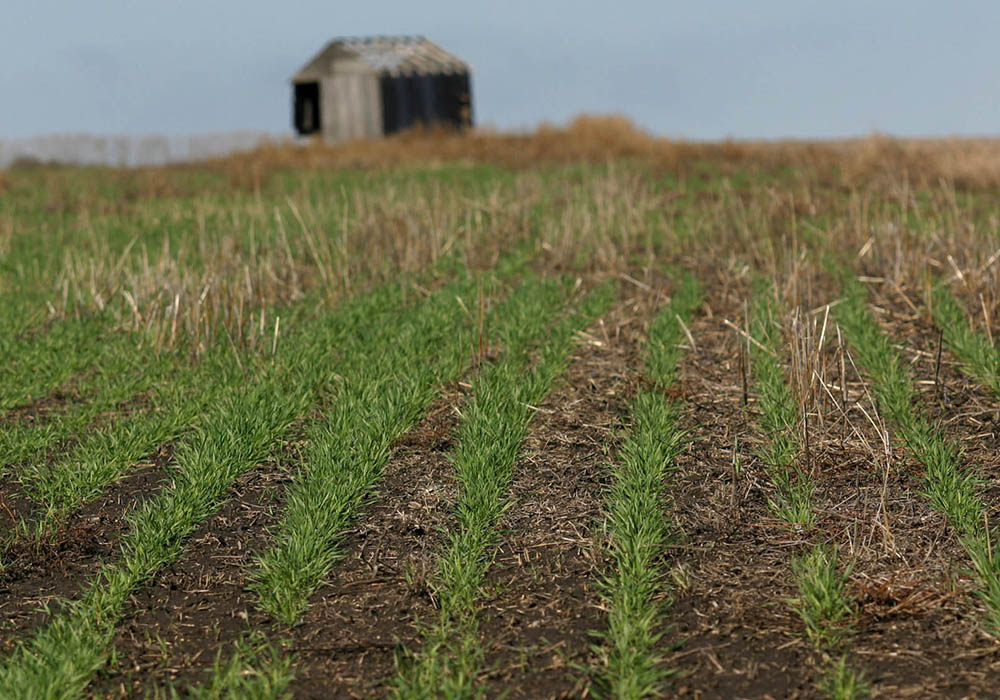High wheat prices will stick around in 2022-23 due to a lack of supply-side response, says an analyst.
“It just doesn’t appear right now that we’re going to be growing our way out of this high-priced environment in the short-term,” said Will Osnato, senior research analyst with Gro Intelligence.
That is because three-quarters of the global wheat crop was already planted and growing before the war in Ukraine erupted.
Read Also

Crop quality looks good this year across Prairies
Crop quality looks real good this year, with the exception of durum.
The only crops that can respond to today’s sky-high prices are spring wheat crops in places like the United States, Canada, Argentina and Australia.
But there is going to be fierce competition in those regions of the world from other crops like corn, soybeans and canola.
“You’re not going to be able to have a planted acreage supply response for at least six months,” he said during a recent webinar.
That is when the following year’s winter wheat crops will be planted.
Ukraine’s crop is in serious doubt. It is going to need a dose of fertilizer as it comes out of dormancy but a recent government survey of 2,500 Ukrainian farmers shows they have 70 percent of their fertilizer needs and only 20 percent of their fuel requirements.
If the war is still being waged in July when the crop is being harvested, the country’s exports will be in serious jeopardy, said Osnato.
Ukraine typically ships most of its wheat in the August-through-October period.
Kelly Goughery, senior research analyst with Gro Intelligence, said the world will need Ukraine’s crop.
North Africa relies heavily on Black Sea wheat and it is having one of the worst droughts on record.
Morocco’s normalized difference vegetation index (NDVI) is at its lowest level since 2000 and the country is experiencing “extreme drought” with a 3.5 rating on a scale that goes up to five.
“Signs of crop stress are ever-present,” she said.
“The country stands to lose up to five million tonnes of production.”
Drought is also gripping the Middle East, a region that imported 24.4 million tonnes of wheat in 2021-22, a 40 percent increase over the previous year.
Iran and Iraq are experiencing “severe drought” and are looking at big crop losses ahead of the late-May harvest.
Egypt is the world’s biggest wheat importer. It usually relies heavily on Black Sea wheat. Shipments from Russia were down in the second half of 2021 due to Russia’s export taxes.
Ukraine and the European Union made up for the Russian shortfall but Ukraine is now out of the picture and the EU doesn’t have the supplies needed to make up for those lost tonnes.
India and Australia will partially fill the void left by Ukraine’s departure. U.S. wheat is uncompetitive due to freight costs.
Osnato said the EU is forecasting winter wheat yields similar to last year and slightly above the five-year average.
There is dryness in Spain but France and Germany, which are the two main wheat-producing states, are in good shape.
Gro’s models are showing below-average yields for the U.S. hard red winter wheat crop despite recent rains in the southwest plains.
There are reports that China’s wheat crop is in the worst condition in history but the Gro model suggest yields will be similar to last year.
“We’re just not seeing it in our yield model or measurements like NDVI,” said Osnato.
Contact sean.pratt@producer.com


















